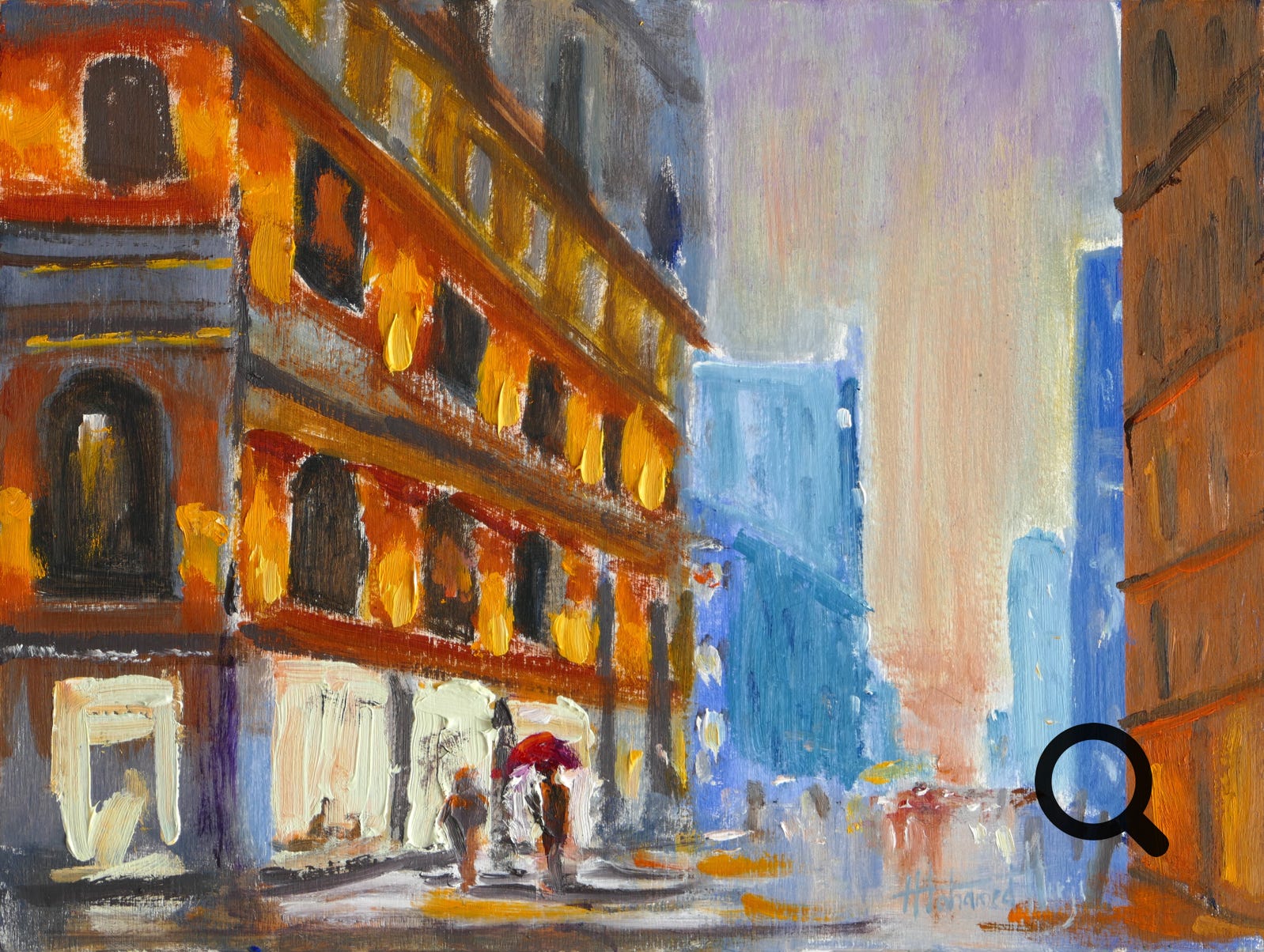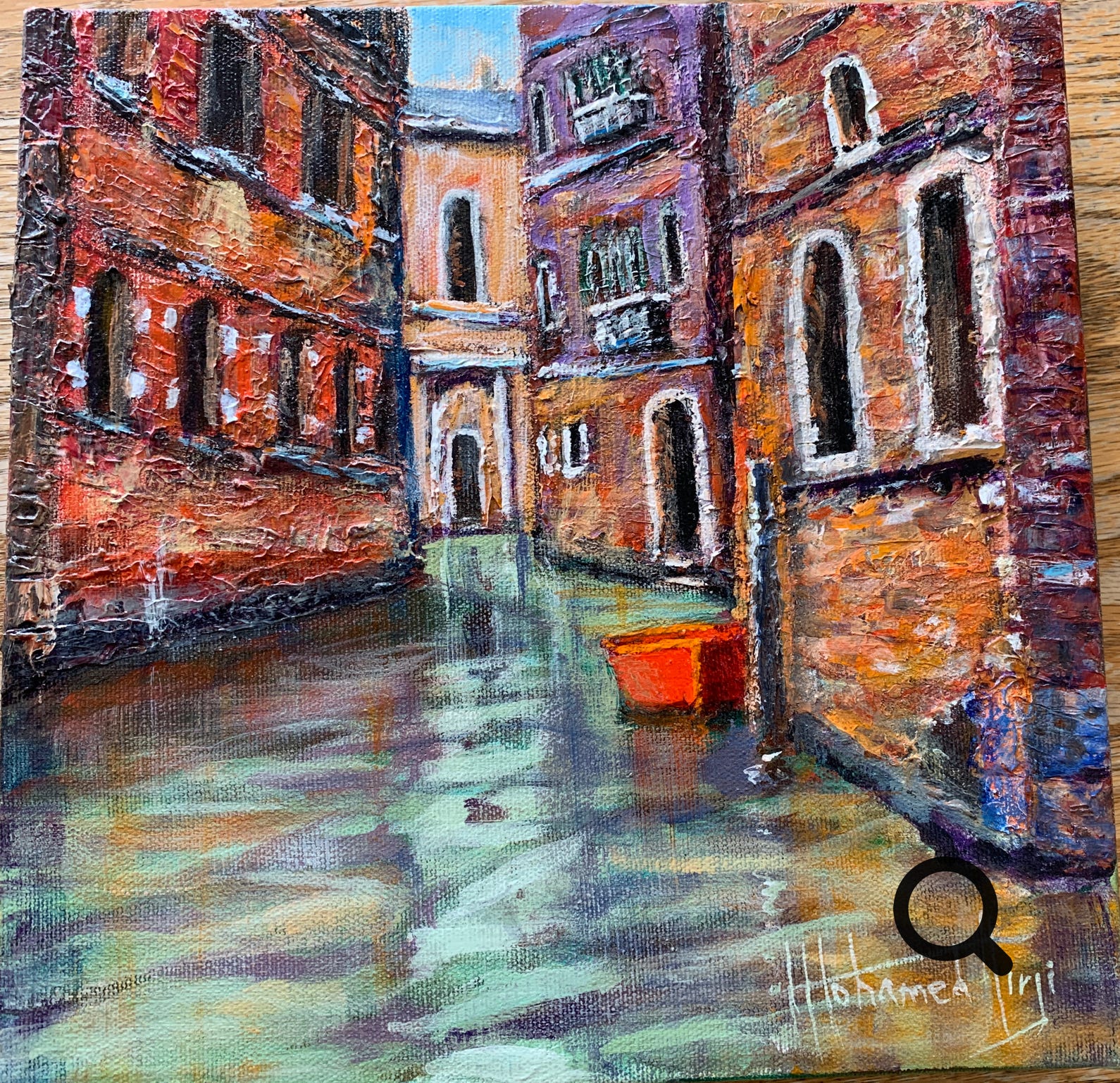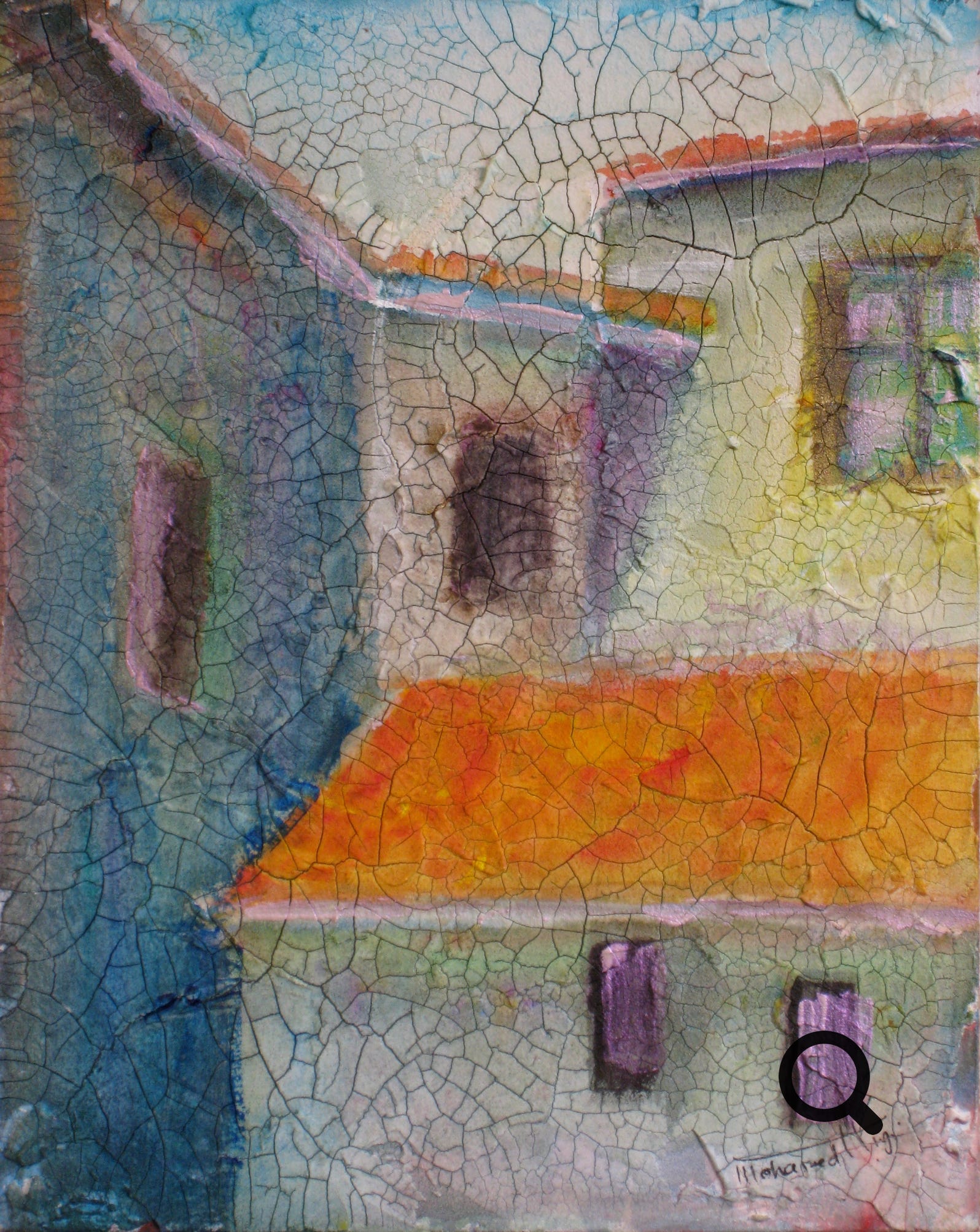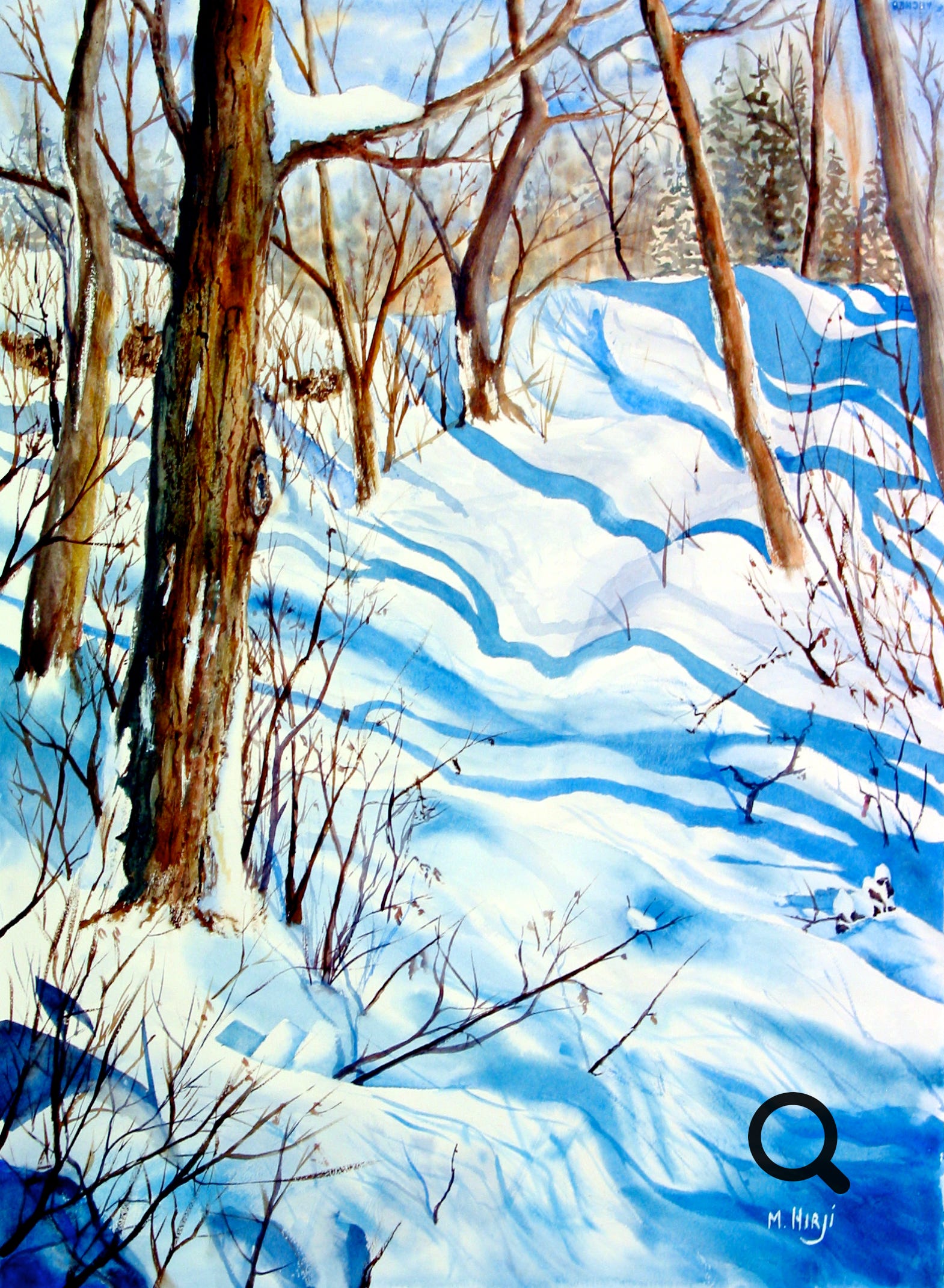Evening Out Oil Painting . Showing Tactile Texture
An acrylic painting, Canale Veneziano showing some wonderful textures on the brick walls of the old buildings.
Canale Veneziano, An Acrylic Painting With Texture On Old Brick Buildings
Apart from texture on the objects themselves, using special media, one can even even create physical textures on the substrate or the surface of the painting tiself. An example is the painting “Casa Antico.” - The ancient house - An acrylic painting where crackling paste on the surface of the canvas has been used to provide an aged, distressed look to the entire painting..



